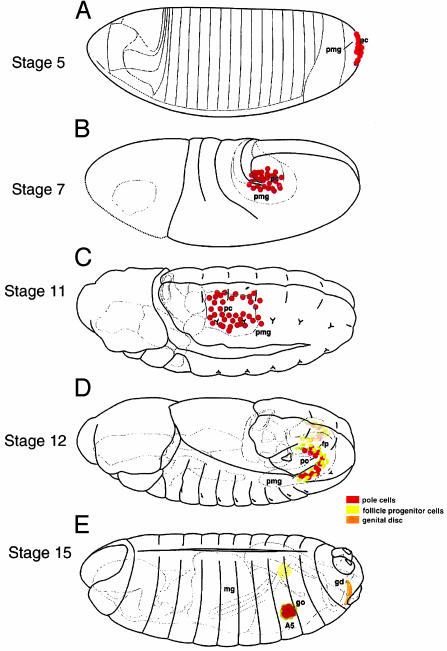Fig. 1.
Diagrams of early gastrulation and postgastrulation stages of Drosophila development to illustrate the formation and migration of pole cells into the embryonic gonad. At stage 5, the pole cells form at the posterior tip of the blastoderm embryo. The blastoderm cells below the pole cells form the precursor of the posterior midgut invagination. At stage 7 the germ band has extended around the posterior tip of the embryo, pushing the posterior midgut invagination, within which are located the pole cells, anteriorly along the dorsal side of the embryo. At stage 11 the pole cells migrate out of the midgut lumen into the dorsal mesoderm. When tumor cells are transplanted at this stage, both gonads might become populated by tumor cells, indicating that a clear left–right boundary does not exist at this time. At stage 12 the germ band is undergoing contraction, resulting in the posterior movement of the abdominal segments. During this time the gonadal mesodermal cells are aggregating to form the embryonic gonad. At stage 15 germ-band contraction is complete and the embryonic gonad has formed. [Reproduced with permission from Rongo et al. (24) (Copyright 1997, Cold Spring Harbor Laboratories).]

